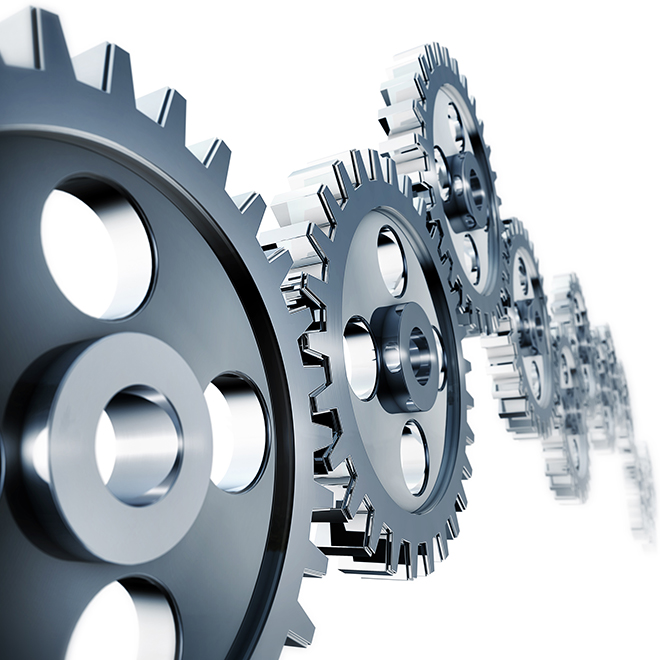 Prof. Farhan Alfin
Prof. Farhan Alfin
“If we combine Computerized maintenance management system – CMMS with Industry 4.0’s principle aspects, it gives an enterprise system that can access to big data that needed to more accurate maintenance planning. This approach determines the potential component failures and failure ratios of critical equipment and components. These systems introduce the possibility of more intelligent maintenance scheduling combined with reduced maintenance cost.”
It is very important to have effective and efficient production as possible to keep the mill business running in the time with hard competition. Mill maintenance management is one of the most important things that ensure this aim by avoid unexpected downtime and late deliveries.
Maintenance management can be achieved by the use of three different methods:
Unscheduled maintenance, preventive maintenance and predictive maintenance.
1- Unscheduled Maintenance (Corrective Maintenance): It is also called emergency maintenance, breakdown maintenance or repair maintenance.
2- Preventive Maintenance (PM): This method all components of machines or equipment are monitored at a specific interval and failures or possible failure sources are determined and eliminated.
3- Predictive maintenance (PdM) measures manually or by online sensors parameters of machines and equipment during working. For example, measuring of elevators bears or mill rollers bears temperature. The data are recorded by specialized software (Computerized maintenance management system – CMMS) to plan a maintenance schedule. This software traces data and historical data using statistic analytical approach to highlight where a machine is not performing as it should so that it can be repaired ahead of time. Predictive maintenance can help mills make repairs when or before they’re needed, rather than running breakdown maintenance or replacing a perfectly good part that may have many cycles left (Preventive Maintenance), thus reducing costly downtime.
PREDICTIVE MAINTENANCE CHALLENGES
Effective predictive maintenance practicing is faced by following:
(1) High demands on data access. This challenge is faced by new technologies sensors that made it is now possible to read parameters of equipment parts, like temperature, vibration, relative position, tightness of driving belt... etc.
(2) The capability to deal with industrial big data. Big Data describes the huge amount of collected data from sensors. Just big data has ability to analyze and can be used to find trends and to determine cause and effect, and its implications for decision-making.
(3) The prediction accuracy of predictive maintenance. After collecting large amounts of data, it is very important to use the data to take a decision about predictive maintenance. The inaccurate decision may result in either unnecessary maintenance, or production downtime because of unexpected machine failures.

HOW MAINTENANCE IS TAPPING INTO INDUSTRY 4.0
Industry 4.0 was presented in 2013 as the vision for the next industrial revolution. This was due to great advances in recent technologies and their potential to improve manufacturing environments. Industry 4.0 described the transition way to Artificial intelligent “Smart” industry.
To achieve industry 4.0 in the mill, three principal aspects “Magic Triangle” have to implemented in the process:
1. A huge digital database will be created from the results that have been read by advanced high technology sensors. This data collection has to be stored in a cloud platform to be shared by maintenance management system and different enterprise systems.
2. IIoT (Industrial Internet of Things): Internet of Things enclose the idea that every sensor and machine have ability to sending and receiving of data over the internet. The introduction of IPv6 protocol in the mid-90s gave opportunities for an “infinite” number of devices to be connected to the internet. Mill process machines have to be developed to have ability for communication on internet to maintenance management system. Instead of collecting data from several sources separately and trying to connect the dots, IIoT does this.

3. Fully automated process that can completely controlled from outside the mill with machine learning technologies has Artificial Intelligence algorithm trying to mimic, and eventually supersede human behavior and intelligence.
If we combine CMMS with Industry 4.0’s principle aspects, it gives an enterprise system that can access to big data that needed to more accurate maintenance planning. Cyber Physical Maintenance Systems (CPMS) is a new concept introduced by Industry 4.0. This system uses the collected data that gathered in real-time by IIoT sensors. The advantage of predictive maintenance is that neither too much (breakdown maintenance) nor too little maintenance (Preventive Maintenance) should be performed, at the same time, the middle road is very hard to find. Thus, to prepare more accurate maintenance program CPMS uses Artificial Intelligent algorithms like Artificial Neural Network algorithm instead of using statistic analytical approach. Root Cause Analysis (RCA) is another example of new algorithms. This approach determines the potential component failures and failure ratios of critical equipment and components. These systems introduce the possibility of more intelligent maintenance scheduling combined with reduced maintenance cost.
References:
Ravnå R. and Schjølberg P., 2016, Industry 4.0 and Maintenance, Norsk Forening for Vedlikehold, Postboks 73, N-1325 Lysaker, Norway.
Li Z., Wang K., and He Y., 2016, Industry 4.0 – Potentials for Predictive Maintenance, International Workshop of Advanced Manufacturing and Automation, Atlantis Press.
Johson C., 2020, A Guide to Industry 4.0 Predictive Maintenance, https://www.iotforall.com/a-guide-to-industry-4-0-predictive-maintenance/
Cousineau M., 2019, The future of maintenance: A practical guide to Industry 4.0, https://www.fiixsoftware.com/blog/industry-4-maintenance/
Williams G., 2018, Three ways Industry 4.0 can improve uptime and reliability, https://www.sageautomation.com/blog/three-ways-industry-4.0-can-improve-uptime-and-reliability